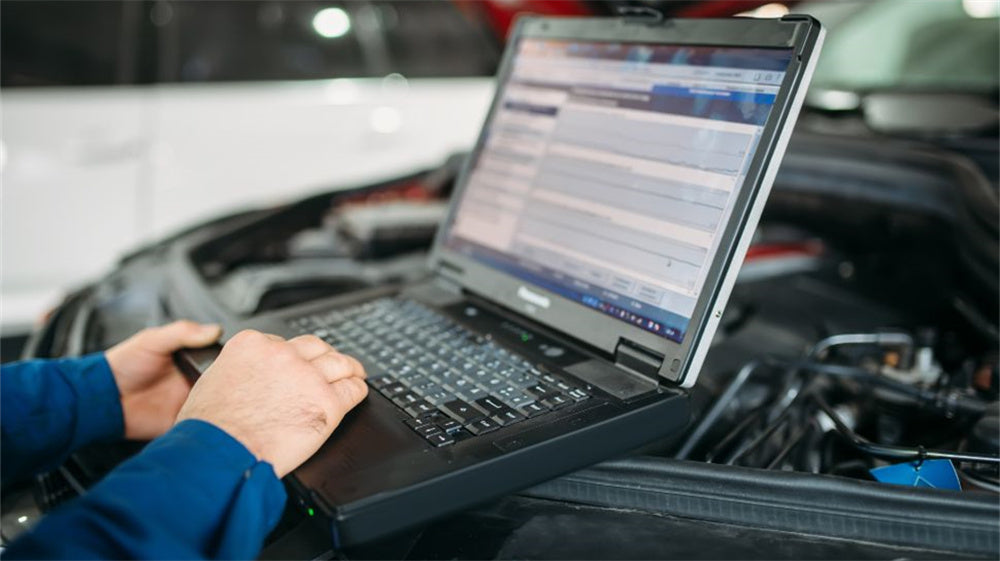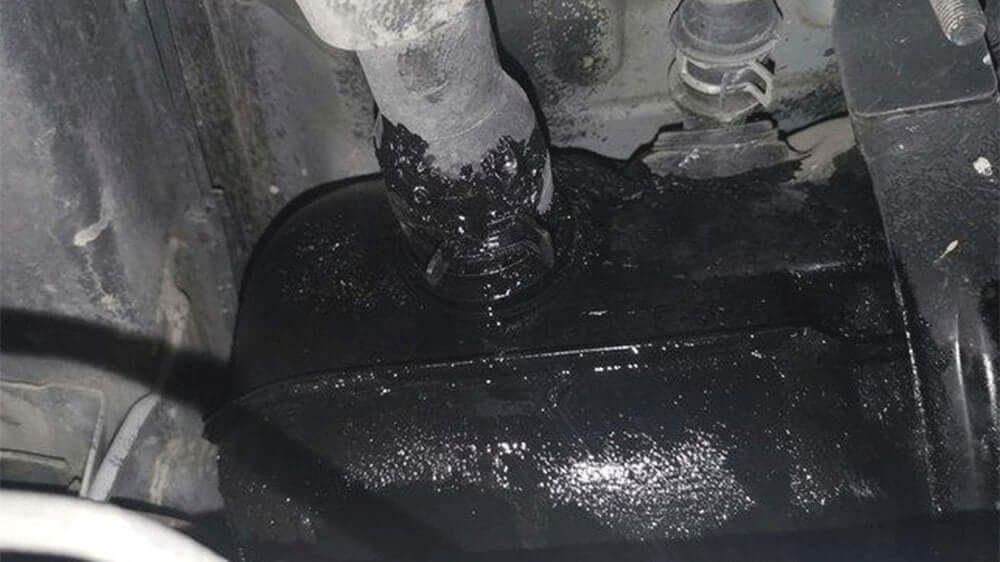
What is OBDII live data and how do we read obd2 live data?
Definition
OBDII live data refer to dynamic data displays that reflect the operating conditions and statuses of various vehicle components. These live data OBDII serve as the basis for ECU (Electronic Control Unit) instructions, including fault detection and control signals. They encompass sensor signals, switch (status) signals, and control parameters from actuators.
Functions
- Maintaining Proper Operation of the Electronic Control System: Ensures the electronic control systems of the vehicle function correctly.
- Displaying System or Component Status: Shows the working status of various vehicle systems or components.
- Detecting and Diagnosing Electronic Control System Faults: Helps in identifying and diagnosing faults within the vehicle's electronic control systems.
- Self-Diagnosis of Electronic Control System Faults: Allows for the self-diagnosis of faults in the electronic control system.
Common Analysis Methods
1. Numerical Analysis: Analyzes the patterns and ranges of obtained data or compares it with standard data to determine if there are any issues. This includes voltage signals, RPM signals, temperature signals, etc.2. Time-Based Analysis: Analyzes the obd2 live data values based on their changes over time. For example, checking the frequency of changes in coolant temperature sensors or oxygen sensors (at least 8 changes within 10 seconds).
3. Causal Analysis: Compares the response and response speed of data that have a causal relationship. For instance, the compressor’s operation is not directly controlled by the AC switch but is determined by the ECU’s assessment of multiple signals.
4. Correlation Analysis: Analyzes and compares related data to identify faults. For example, comparing the electronic throttle pedal position signal with the throttle position sensor’s opening signal.
5. Comparative Analysis: Compares data from two similar vehicles of the same make and model under identical conditions to determine if the values are normal. This can also be done on the same vehicle under different conditions (e.g., cold vs. warm engine). If no similar vehicle is available, parts can be replaced and data compared to diagnose faults.
Obd2 live data Common Terms and
Abbreviations
Engine
1. Engine RPM(Revolutions Per Minute): Indicates the current engine speed, measured in r/min, and sourced from the crankshaft position sensor.
2. Coolant Temperature: Represents the engine's coolant temperature, measured in °C, and sourced from the coolant temperature sensor.
Note: Most vehicles have two coolant temperature sensors, sometimes integrated into one unit (e.g., three-wire or four-wire sensors). One sensor provides data to the ECU, while another provides data to the temperature gauge.
3. Engine Load: Indicates the fuel injection time based on current engine load, representing the amount of fuel needed to overcome engine friction and drive related accessories. Displayed in ms or percentage. Calculated by the ECU based on oxygen sensor parameters.
4. IAT(Intake Air Temperature): Indicates the temperature of the air entering the engine for combustion, measured in °C, and sourced from the intake air temperature sensor. It is a crucial parameter for calculating fuel injection amounts.
5. Accelerator Pedal Position: Shows the position of the electronic throttle, typically with two signals (positive and negative) and expressed as a percentage. Sourced from the accelerator pedal position sensor.
6. Throttle Position: Shows the current throttle valve opening, expressed as a percentage, and sourced from the throttle position sensor.
7. Intake Pressure: Represents the pressure inside the intake manifold, measured in kPa, and sourced from the intake pressure sensor.
8. Fuel Injection Pulse Width: Indicates the duration of fuel injection, measured in ms, and calculated by the ECU.
9. Oxygen Sensor: Indicates the voltage from the O2 sensor signal line, varying between 0 and 0.9V. A value above 0.45V indicates a rich mixture, while below 0.45V indicates a lean mixture. Sourced from the oxygen sensor.Note: When checking oxygen sensor live data, observe the frequency of changes. There should be at least 8 changes within 10 seconds; fewer changes indicate a potential fault (reduced sensitivity).
10. Short-Term Fuel Trim: Represents the ECU’s short-term adjustment based on oxygen sensor signals, displayed as a percentage, typically ranging from -10% to +10%. A high oxygen sensor voltage indicates a rich mixture, leading to a negative short-term fuel trim (reducing fuel injection pulse width).
11. Long-Term Fuel Trim: Derived from short-term fuel trim adjustments for long-term calibration. Displayed as a percentage. Values below 0% indicate a rich mixture, leading to reduced fuel injection pulse width.Note: In some V engines, there are separate fuel trim parameters for each bank to balance engine operation.
12. Fuel Level: Indicates the current fuel level, expressed as a percentage, and sourced from the fuel level sensor.
Chassis
1.Brake Switch: Shows the status of the brake switch, either ON or OFF. Sourced from the brake switch.
2.Wheel Speed Signal: Represents the speed of each wheel, measured in km/h, with each wheel having its own signal, sourced from the wheel speed sensor.
3.Brake Fluid Level: Indicates whether the brake fluid level is normal or low, with ON representing low level and OFF representing normal. Sourced from the brake fluid level sensor.
4.Steering Wheel Angle: Shows the position of the steering wheel, measured in degrees (°), with positive and negative values. Sourced from the steering wheel angle sensor.
Air Conditioning
1. AC Pressure: Indicates the pressure in the AC system’s pipes, measured in kPa (or bar), and sourced from the high and low-pressure switches.
2. Indoor Temperature: Shows the temperature inside the vehicle, generally near the evaporator or air outlet, measured in °C. Sourced from the indoor temperature sensor. (Some vehicles also differentiate between the driver’s side and passenger side temperatures.)
3. Outdoor Temperature: Indicates the temperature outside the vehicle, generally near the radiator, measured in °C. Sourced from the outdoor temperature sensor.
Automatic Transmission
1. Gear Position Switch: Shows the current gear position, sourced from the gear position switch.
2. Transmission Oil Temperature Sensor: Displays the current temperature of the transmission oil, sourced from the transmission oil temperature sensor.
3. Output RPM: Indicates the output RPM of the transmission, sourced from the vehicle speed sensor.
4. Gear Shift Solenoid Status: Shows the operational status of each gear shift solenoid.
5. Others: Commonly used terms, such as light status, light switches, etc., will be detailed in future articles.
Diagnostic Tips
When reading live data to diagnose faults, consider the following methods:
1. Comparative Analysis: Compare data from similar vehicles, parts, or operating conditions.
2. Throttle Adjustment: Check if data changes with throttle adjustments to identify faults.
3. Connector Manipulation: Disconnect a sensor or actuator to observe changes in data.
4. Manual Interference: Use hands to manipulate sensors or apply heat to sensor probes for testing.
Fault Analysis
Vehicle Information
A 10-year-old Audi A6 with a 2.4L engine and approximately 110,000 km mileage.
Fault Symptoms
The owner reports poor acceleration, with the engine RPM rising slowly when the throttle is pressed.
Diagnostic Process- 1. Read fault codes and find none.
- 2. Examine live data, focusing on the throttle position sensor and accelerator pedal position sensor data.
- 3. Observe the live data for both sensors and find no faults.
- 4. Check additional related data, such as fuel pressure, intake pressure, and oxygen sensor data.
- 5. Discover that at idle, the ignition timing is at 9.5°, and it changes slowly when the throttle is pressed. Intake pressure is also low, suggesting restricted intake could be causing poor acceleration.
- 6. Remove the air filter and find a plastic bag obstructing the airflow. After removing the bag, the issue is resolved.
Author’s Analysis
The fault was due to restricted intake airflow causing poor acceleration. As no fault codes were present, the issue was related to airflow restrictions affecting the engine’s ability to accelerate properly. The ECU’s ignition control algorithm, based on engine RPM and intake flow, did not adjust the ignition timing promptly due to restricted intake, resulting in delayed ignition timing changes.
This concludes today’s introduction to obd2 live data meanings. After reading, do you have a foundational understanding of how to read live data from obdII or any remaining questions about common obd2 live data terms?
















































































